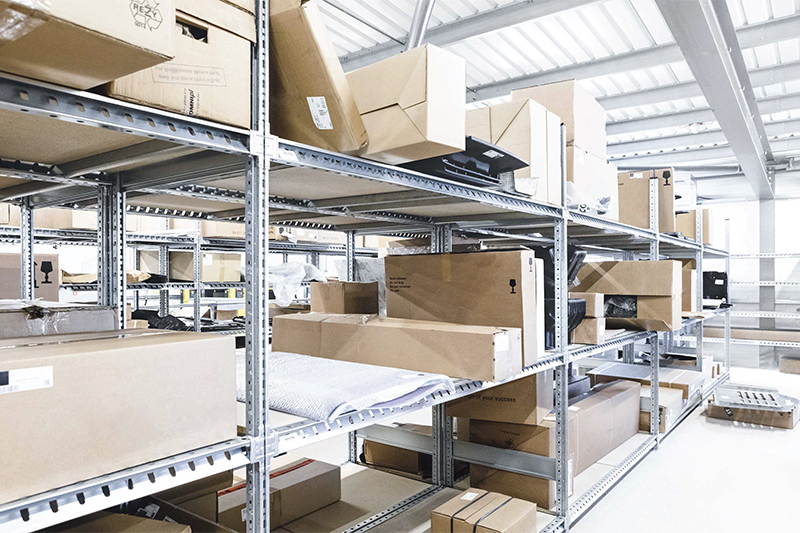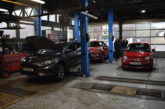
Linco Automotive is spreading the word on the role a professional storage system can play in your workshop.
Making your mark as a successful business can be greatly enhanced by four Ps – perception, professionalism, proactivity and profitability, especially when surplus revenue is re-invested to improve perception and completes the equation.
A modern workshop is the sum of all the four Ps, and a major variable is storage, which underpins the whole formula.
“A modern workshop needs to be clutterfree, and where parts and tools are stored needs to reflect that,” says Paul Booth, Managing Director of Linco Automotive, an Oldham-based business specialising in storage solutions for the automotive aftermarket industry.
Linco Automotive holds approved shelving and racking supplier status for 11 of the top 25 motor groups in the UK, operating domestic and commercial vehicle dealerships for brands such as Jaguar Land Rover, Ferrari, Porsche, BMW and Mercedes Benz.
Paul and his fellow director Lee Satloka, who together have more than 50 years’ experience in the industry, make it their company’s mission to provide future-proof, tailored storage solutions that optimise their customers’ valued resources of space, stock and time.
Lee Satloka: “Professionalism and perception go hand in hand. If a customer perceives a garage is a professionally run establishment, it gives them confidence in the service they’re receiving. Smart exteriors, good customer facilities and a well-ordered workshop can make a big difference. Reinvesting a small amount of profit to improve perception will pay dividends.”
Being proactive to fuel efficiency
Paul Booth: “All jobs are timed in a modern workshop, and every car is monitored for how long it spends on a ramp. The speed of getting parts and tools to that car is essential. If you have a storage system that allows you to retrieve what you need quickly, then that’s key.”
Lee Satloka explains the benefits of being proactive: “A lot of cars have common parts. The ability to store a healthy stock of those parts is essential to save time.
“The key for an independent garage is what it can pick from stock and fit while the car is being worked on. The only way that can happen comes back to a well-stocked, efficient storage system. Without it, technicians face costly delays and turnaround times are slow.”
How can storage improve profitability?
“Efficiency coupled with a proactive approach is a potential profit driver,” says Paul Booth. He adds: “A garage has two profit centres, the workshop and the parts department. Investing in stock can increase margins and accelerate the turnaround of repairs and services. It could mean two extra cars a week going through the workshop and that can only improve profitability.
“Most garages know the number and types of vehicles they turn over most often. By taking time to think ahead and ordering a good stock of the parts they use most often, they will become more efficient and potentially more profitable.”
Providing the solution
Linco Automotive is a specialist partner with SSI Schaefer, one of the world’s leading storage manufacturers. Its shelving and racking systems are specifically designed for the automotive aftermarket sector, and benefit from galvanised steel components that are both strong and durable, thanks to a protective coating that stops corrosion.
Critically, it is easily adjusted – there are no nuts, bolts or screws – and is totally scalable and adapts with your stock profile, making it completely user friendly and future proof.
Paul Booth: “A garage meeting all the criteria of a modern workshop needs to work out how much stock it wants to hold. We have a formula of storage density per square metre, and once we calculate that, we can identify how much space a client will need to be efficient.”
The formula leads to design and layout, as Lee Satloka explains: “Each ramp needs a space measuring 4mx5m to enable safe and sufficient navigation. You need to consider factors such as tool storage, reversing and driving space. For example, depending on the floor plan, you can maximise space by rotating ramps or simply keep them perpendicular. That’s when you start to build a bigger picture.”
The pair also advocate taking account of the height of a premises. Paul Booth: “In a relatively modern unit, a car on a ramp goes up to 4m. If a unit is 6m high, that is 2m of wasted space. We could put a floor in there. We’ve done it at several dealerships. Quite often we see garages with a row of offices and one ramp. By relocating the offices to a floor above will create extra repair space and the therefore extra profit.”
Last word to Lee Satloka: “Storage is storage – it’s all about how you configure and optimise it within your workshop footprint and that’s our expertise. That’s what sets us apart from everyone else. Anyone can fill a room with racking, but when they walk away from it, will it work efficiently?”









